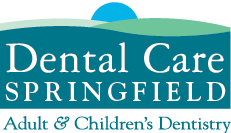Braces: They’re not Just for Kids
If you didn’t have braces when you were a kid, or you weren’t diligent about wearing your retainers, you might be considering getting braces as an adult. And you’re not alone – more and more adults are seeking out orthodontic treatment. However, there are still many myths out there about braces that make many adults hesitant to consult an orthodontist. Read on to dispel five common myths about adults and braces.
Myth # 1: Adults Are Too Old for Braces
There is no age limit on having a healthy and straight smile. Whether you’re 10 or 50, braces work in the same way to move your teeth. And while there are advantages to having braces when your jaw is still developing, correcting orthodontic issues is definitely possible in older patients. Orthodontic treatment can address a wide array of problems such as crowded teeth, crooked teeth, gaps, irregular spacing, overbites, under bites and teeth that have moved after previous orthodontic treatment.
Another important thing to remember is that a huge part of the success of orthodontic treatment is compliance. Adults tend to be responsible and invested in their treatment. This helps to improve their outcomes and may even decrease the time of treatment.
Myth #2: Metal Braces Are the Only Option
Unlike in years past, metal braces are definitely not the only option when it comes to orthodontic treatment. Two of the most popular alternatives to metal braces are clear braces and aligners. Clear braces work in the same way as traditional braces except that they are made from a composite material that blends in with your teeth, making them less noticeable. With today’s technology, the material used for clear braces is more stain resistant and more durable than clear braces of the past.
Aligners are clear, removable trays that are switched out about every two weeks to accommodate the movement of teeth. The most common brand of aligners is Invisalign. While aligners are less noticeable than metal or clear braces, they are not completely invisible. If you opt for Invisalign, the trays must remain in your mouth for 20 to 22 hours each day and can only be removed for eating and brushing and flossing your teeth.
And remember, if you do decide to go the traditional route, today’s metal braces are much smaller than they used to be. Years ago, having braces meant having a metal band around nearly every tooth. Now, metal braces hold wires with just a single bracket cemented on the front of your tooth. A few bands in the back of your mouth anchor the wires.
Myth #3: Orthodontic Treatment is Painful and Takes Forever
Orthodontics has come a long way in the last several decades. Technology, techniques and best practices are constantly evolving to straighten teeth more quickly and efficiently than ever before. Braces, both clear and metal, as well as aligners, now apply a small amount of force over time instead of a strong force in a short period of time. This has actually been shown to move teeth into place faster and with far less discomfort.
In addition, innovations such as digital x-rays give orthodontists more visual information than they’ve ever had before. This allows them to plan your treatment with much more precision, meaning that your treatment will be as efficient and pain-free as possible.
Myth #4: Orthodontic Treatment is Time-Consuming and Inconvenient
This myth goes hand-in-hand with Myth #3. As technology, diagnostic equipment and treatment options have improved, so has the ability for orthodontists to straighten your teeth in fewer and shorter appointments. Orthodontists and their staff also recognize the unique scheduling challenges that adult patients face and are more than willing to work with you to provide appointments that fit into your schedule.
Myth #5: Having Straight Teeth is Purely Cosmetic
While it is true that having straight teeth will definitely improve your smile, as well as your self-esteem, there are many other reasons to get braces. Straight teeth are easier to clean and this improves your overall oral hygiene and reduces your risk of tooth decay and gum disease. And since gum disease is tied to conditions like diabetes, heart disease and stroke, straight teeth can help improve your overall health.
In addition, orthodontic treatment can help you breathe, speak and chew properly, as well as reduce the abnormal wear of teeth and balance your bite to alleviate headaches and jaw pain.
If you are thinking of getting braces or trying Invisalign as an adult, don’t hesitate to schedule a consultation with an orthodontist. Most consultations are free and easy to schedule. The sooner you get a consultation, the sooner you can be on your way to a healthy and straight smile!
 Hours:
Hours: 


